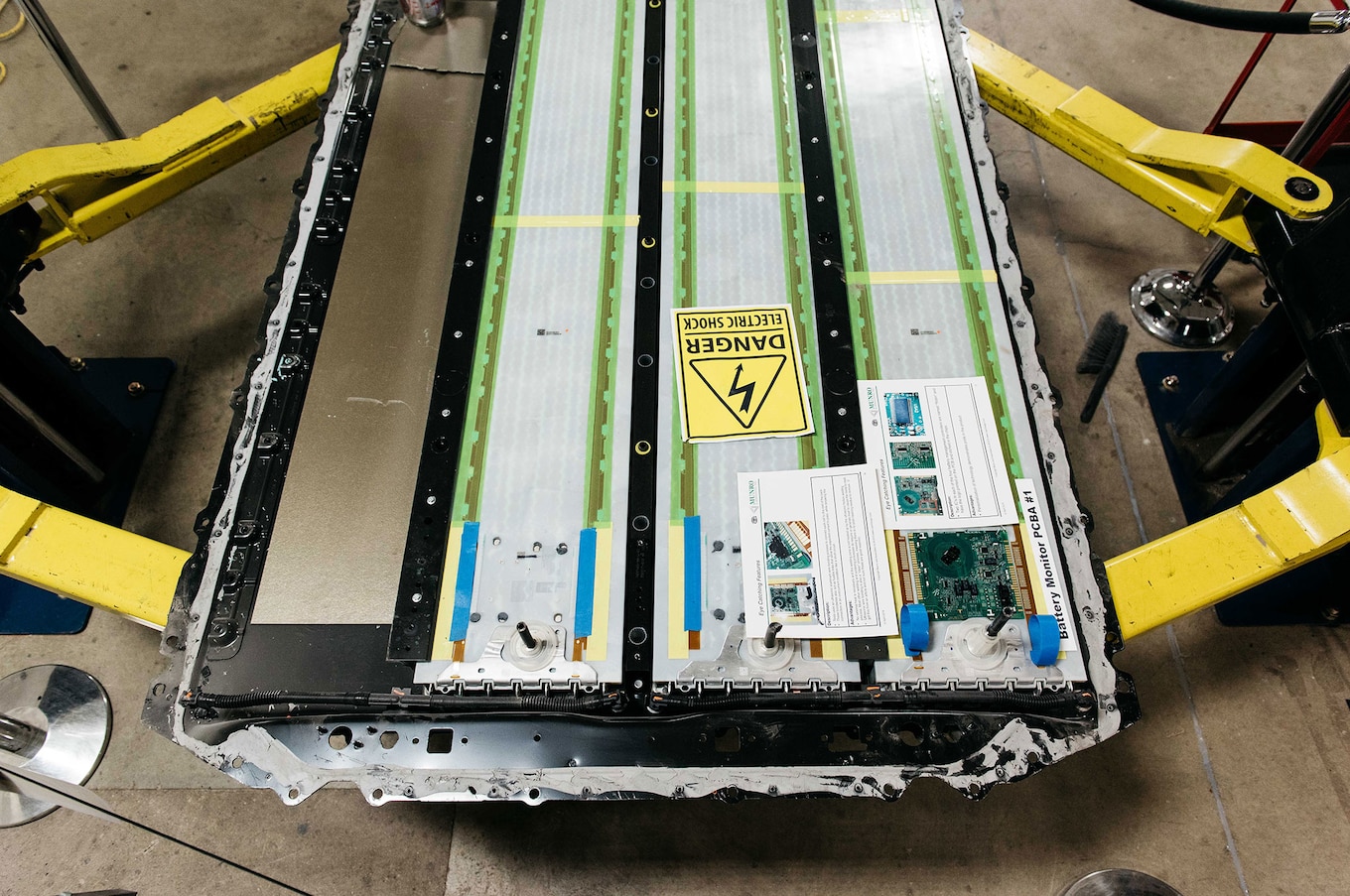



The battery is a C&D Technologies DCS-33RIT, at least in many of the cars. It’s orange, here, in one photo that did the rounds a while ago. The Model S 12V battery lives somewhere ranging from “convenient to replace” to “really damned annoying to replace,” depending on the particular options. Of course, if you never let your car below about 40F, a LiFePO4 drop in replacement would probably work fine, assuming the computers didn’t notice and complain. If you replaced this 12V battery with a lithium battery, you’d have to add heaters and the like to it - you simply cannot safely charge a lithium battery below about the freezing point of water. There are jump start terminals (which, by the way, you shouldn’t use to jump another car), but the Model S is entirely reliant on this 12V lead acid battery to function. If the 12V battery is dead, so is the car. The computers run off the 12V system, the interior electronics (locks, windows, seats, etc) run off 12V, and the main contactor for the big battery underneath requires a functioning 12V system. The Model S uses the 12V system to run pretty much everything. Also, every single car part out there in parts bins is designed to work on a 12V lead acid battery operating range. Fine for a traction battery, not so good for a regularly cycled utility battery.Ĭars have to operate reliably over a huge range of temperatures, and lead acid is really good for providing basic power to a car. The Model S will use the charger power to heat the battery pack before charging, if needed. Lead acid will put out less power and energy when cold (this is why “cold cranking amps” matter), but it’s not damaged by use in the cold.ĭischarging doesn’t damage lithium in the cold (it lacks power, but isn’t otherwise affected) - but charging when cold is really bad. If you try to charge a lithium batter when cold, you end up with lithium plating, which permanently reduces capacity. Lead acid also has a very important characteristic: If properly charged, it doesn’t freeze (above -90F or so) - and it can charge and discharge safely over an incredibly wide temperature range without being damaged. The energy density is poor, but the power density can be quite good (this is why it’s used in most cars - it’s great at turning starter motors for a few seconds). There have been many refinements over the years, but at the core, you’ve got lead plates, sulfuric acid, and chemistry. Lead acid is a very, very old battery chemistry - it was invented in 1859, so it’s over 150 years old at this point. So, in I dive! Chart a course to graphs! Why Lead Acid?įirst, it’s important to explain why the Model S has a 12V lead acid battery in the first place - and why the battery is lead acid as opposed to one of the assorted lithium chemistries (which is a common question every now and again as people find out that, surprisingly, their lithium powered car has a lead acid battery). Rumor has it that the power settings are “Energy Saving : Off” & “Always Connected : On.” Voltage, amperage into or out of the battery, and some surrounding data about charge state and the like. I’ve got, on my flash chips, this tiny little file that, on analysis, turns out to be a few days worth of data log from a Model S 12V battery system in late 2016. I was wandering around the internet and came across something interesting. Though if you have one laying around you’d be willing to part with, let me know…Īnyway. No, I couldn’t get my hands on a PowerWall, and no, one wouldn’t even be useful to me voltage-wise. I don’t own a Model S, but I do know a little bit about batteries - and while most of my work is with lithium battery packs, I also know a bit about lead acid batteries, as my office uses a good sized bank of them (about 225Ah at 48V, depending on rate) for solar energy storage. This little gizmo is the cause of an awful lot of unhappiness with the Model S. Sadly, I can’t do that - because this battery is a failure-prone sore point among many owners, and far too many owners with a >2 year old car are entirely aware of it, as the battery has already failed and been replaced at least once. It would be great to be able to start this post talking about how the Model S, much to the amazement of many owners, has a 12V lead acid battery.


 0 kommentar(er)
0 kommentar(er)
